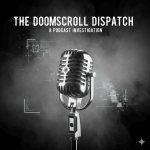Executive Summary
In late 2024, AgEagle Aerial Systems, Inc. (NYSE American: UAVS) was locked in a corporate battle for its very survival. This battle led to an extraordinary two-month trading halt and a massive wave of shareholder dilution. These events were not isolated phenomena. They were the direct and interconnected consequences of a company in severe financial distress.
AgEagle executed a series of high-stakes maneuvers to raise critical capital and avoid being delisted. The trading halt was a regulatory measure to ensure market stability. The dilution was the steep price of survival.
The two-month halt, coded as an H11 “Regulatory Concern,” was an extended “time-out” imposed by the NYSE.¹ It was necessitated by a perfect storm of corporate actions. The company launched a highly complex public offering involving stock and multiple warrants. This was immediately followed by a 1-for-50 reverse stock split.
Regulators required this unusually long period to ensure all market systems could accurately process the dramatic changes. This included adjustments to the company’s share price, share count, and security identifiers. The halt was a preventative measure designed to avert a disorderly market and protect investors from potential chaos.²
Concurrently, the significant shareholder dilution was a multi-stage process born of desperation. It began with a September 2024 public offering structured with deeply unfavorable terms, a necessity given the company’s weak bargaining position.³ The process culminated in a critical shareholder vote in December 2024. Shareholders approved an extraordinary 4,000% increase in the number of authorized shares.⁴ This was a mandatory step required to cover the warrants from the September offering and create a path for future financing. The company effectively mortgaged its future equity to survive the present crisis.⁴, ⁵
The causal link is direct. Financial distress necessitated the dilutive offering. The offering and low stock price required the reverse split to maintain listing standards. The combination of these complex events triggered the prolonged trading halt. Finally, the reverse split created a shortage of authorized shares, forcing the shareholder vote for massive future dilution. Each event inexorably caused the next in a cascade of corporate survival tactics.
| Date | Event | Significance |
| Sep 30, 2024 | AgEagle prices a $6.5 million public offering of “Units”.³ | A highly dilutive capital raise structured with warrants, signaling the company’s weak negotiating position and urgent need for cash. |
| Oct 3, 2024 | The company announces a 1-for-50 reverse stock split.⁶ | A defensive move to artificially boost the per-share price to meet NYSE American’s minimum listing requirements. |
| Oct 4, 2024 | NYSE American initiates an H11 “Regulatory Concern” trading halt on UAVS.¹ | The exchange freezes trading to manage the complexity of the offering and impending reverse split, preventing market chaos. |
| Oct 8, 2024 | The Options Clearing Corporation (OCC) restricts UAVS stock for loans/collateral.⁷ | The halt renders shares illiquid for financing purposes, demonstrating the severity of the market disruption. |
| Oct 15, 2024 | The 1-for-50 reverse stock split becomes effective while the stock remains halted.⁸ | The company’s share structure is fundamentally altered, but the market cannot yet react. |
| Nov 4, 2024 | AgEagle receives an NYSE non-compliance notice for board composition.⁹ | An additional sign of governance strain amid the financial crisis. |
| Dec 3, 2024 | Trading in UAVS resumes after nearly two months.¹⁰ | The market is finally able to trade the “new” security on a split-adjusted basis. |
| Dec 20, 2024 | A Special Shareholder Meeting is held to approve a massive increase in authorized shares.⁴ | Shareholders approve a 4,000% increase in authorized shares, enabling massive future dilution to fund operations and cover warrant obligations. |
| Mar 31, 2025 | The company files its 2024 10-K, revealing a $5.7 million stockholders’ deficit.¹¹, ¹² | The official financial statements confirm the depth of the insolvency that drove the preceding events. |
| Apr 29, 2025 | AgEagle receives an NYSE non-compliance notice for its stockholders’ deficit.¹³ | The exchange formally recognizes the company’s failure to meet minimum equity requirements, starting a compliance “cure” period. |
| May 23, 2025 | The deadline for AgEagle to submit its compliance plan to the NYSE.¹³ | A critical step in the company’s ongoing battle to remain a publicly listed entity. |

